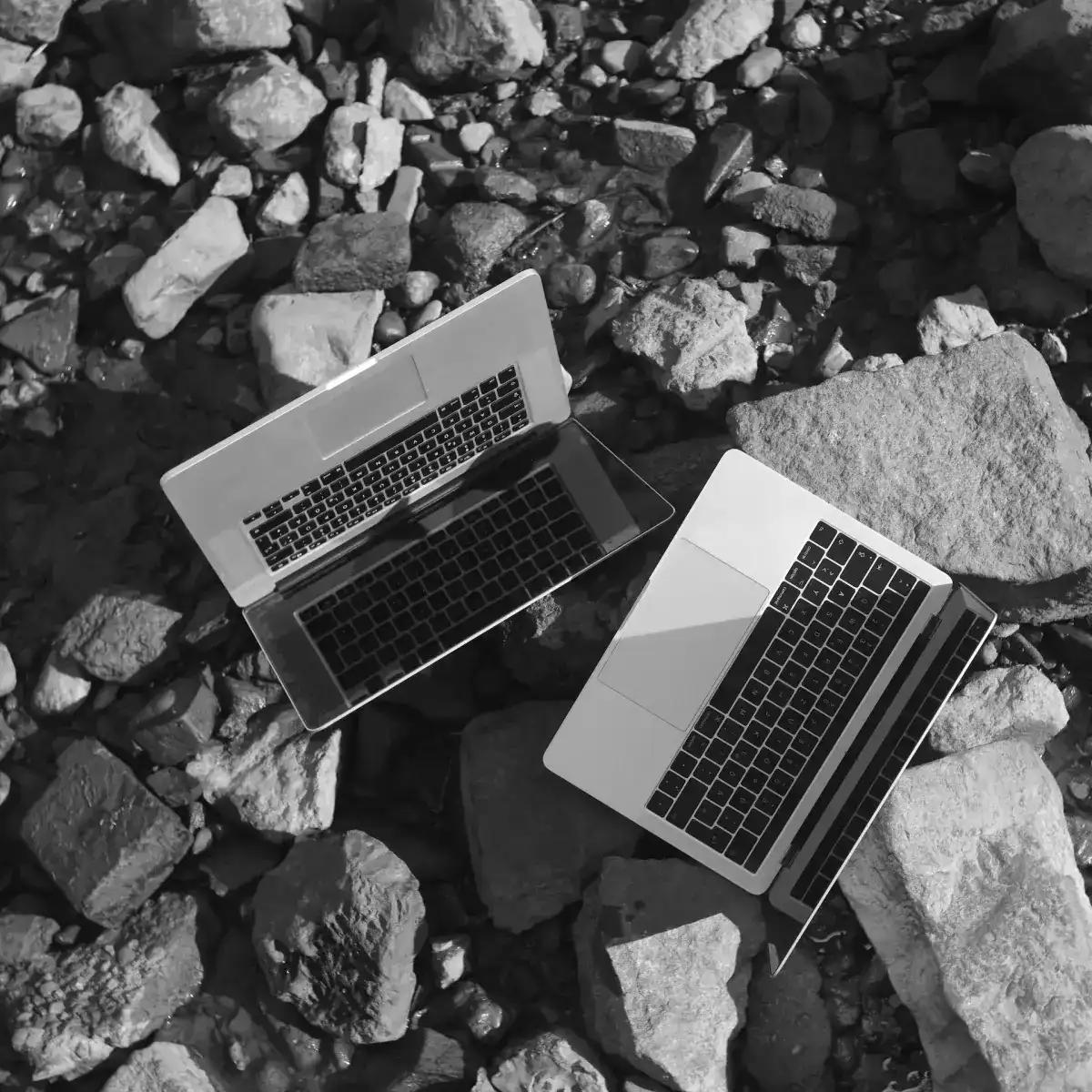MacBook Getting Hot and Fan Loud? What You Can Do
Introduction
Is your MacBook heating up like a toaster and the fan sounds like a jet engine? You're not alone. Whether you have an Intel MacBook or one of the newer M1, M2, or M3 models, overheating can affect performance and longevity. Let's explore the causes and solutions.

Understanding your MacBook's cooling system is key to solving heat issues
🚀 Quick Fixes to Try Now
- Quit resource-heavy apps: Check Activity Monitor (⌘ + Space, type "Activity Monitor")
- Reset SMC: Shut down → Press Shift-Control-Option + Power for 10 seconds
- Update macOS: Apple Menu → System Settings → Software Update
- Remove from soft surfaces: Use on hard, flat surfaces only
- Check for malware: Run Malwarebytes or similar
Normal Heat vs. Problem Heat
Normal Temperature Behavior
- Warm during video editing, gaming, or compiling code
- Fan audible during intensive tasks
- Temperature returns to normal after task completion
- CPU temperatures 40-80°C under load
Signs of a Problem
- Hot to touch even during light use
- Fan constantly at maximum speed
- Random shutdowns or kernel panics
- Significant performance throttling
- CPU temperatures consistently above 90°C
Common Causes of Overheating
1. Dust Accumulation
The #1 cause of overheating. Dust blocks air vents and insulates heat-generating components.
2. Runaway Processes
Background apps consuming excessive CPU resources:
- Spotlight indexing
- Time Machine backups
- Cloud sync services
- Browser with many tabs
- Cryptocurrency miners (malware)
3. Thermal Paste Degradation
After 3-5 years, thermal paste between CPU/GPU and heat sinks dries out, reducing heat transfer efficiency.
4. Failed Fans
Fans can fail mechanically or due to sensor issues, preventing proper cooling.
5. Software Issues
- Outdated macOS version
- Incompatible kernel extensions
- Corrupted system files
- Background Windows installations (Boot Camp)
Intel vs. Apple Silicon: Different Heat Profiles
Intel MacBooks (Pre-2020)
- Higher power consumption (15-45W typical)
- More heat generation
- Active cooling essential
- Thermal throttling common under load
M1/M2/M3 MacBooks (2020+)
DIY Solutions by Severity
Level 1: Software Solutions
- Check Activity Monitor
- Sort by CPU usage
- Quit unnecessary high-usage apps
- Look for "kernel_task" high usage
- Reset SMC and NVRAM
- SMC controls thermal management
- NVRAM stores fan speed preferences
- Reduce Visual Effects
- System Settings → Accessibility → Display
- Turn on "Reduce motion"
- Turn off "Transparency effects"
Level 2: Physical Cleaning
- External Cleaning
- Use compressed air on vents
- Hold can upright, use short bursts
- Clean keyboard area
- Elevate Your MacBook
- Use laptop stand for better airflow
- Avoid soft surfaces (bed, couch)
Level 3: Advanced Solutions
- Use fan control software (Macs Fan Control)
- Disable Turbo Boost (Intel models)
- Reduce display resolution/refresh rate
- Use external GPU for graphics-intensive tasks
Temperature Monitoring Tools
- iStat Menus: Comprehensive system monitoring
- Intel Power Gadget: For Intel CPUs
- TG Pro: Temperature and fan control
- CoconutBattery: Battery temperature monitoring
Normal CPU temperatures: 30-50°C idle, 60-85°C under load
When Professional Cleaning is Needed
Consider professional service if:
- DIY cleaning doesn't improve temperatures
- Fan runs constantly even after SMC reset
- MacBook is over 2 years old
- You see visible dust in vents
- Thermal throttling affects daily use
Our Professional Service Includes:
- Complete disassembly and cleaning
- Thermal paste replacement
- Fan functionality testing
- Heat pipe inspection
- Before/after temperature testing
Preventing Future Overheating
- Regular Maintenance
- Clean vents monthly with compressed air
- Professional cleaning annually
- Smart Usage
- Close unused apps and browser tabs
- Use Safari instead of Chrome (more efficient)
- Avoid blocking ventilation
- Environmental Factors
- Use in well-ventilated areas
- Avoid direct sunlight
- Consider cooling pad for heavy use
⚠️ Warning Signs Requiring Immediate Action
- Sudden shutdowns during use
- Display artifacts or glitches
- Keyboard or trackpad becoming too hot
- Battery swelling (check if case is warped)
- Burning smell
These symptoms indicate potential hardware damage. Stop using the MacBook and seek professional help immediately.
Frequently Asked Questions
Is it normal for MacBooks to get hot?
Moderate warmth during intensive tasks is normal. However, if your MacBook becomes uncomfortably hot to touch, fans run constantly at maximum speed, or performance drops significantly, this indicates a problem requiring attention.
Why is my M1/M2/M3 MacBook getting hot without a fan?
MacBook Air M-series models have no fan and rely on passive cooling. They can get warm during sustained workloads. This is by design, but excessive heat may indicate background processes, malware, or hardware issues.
How often should I clean my MacBook's cooling system?
For normal use, annual cleaning is sufficient. In dusty environments or with pets, clean every 6 months. Heavy users should consider professional cleaning every 3-4 months to maintain optimal cooling performance.